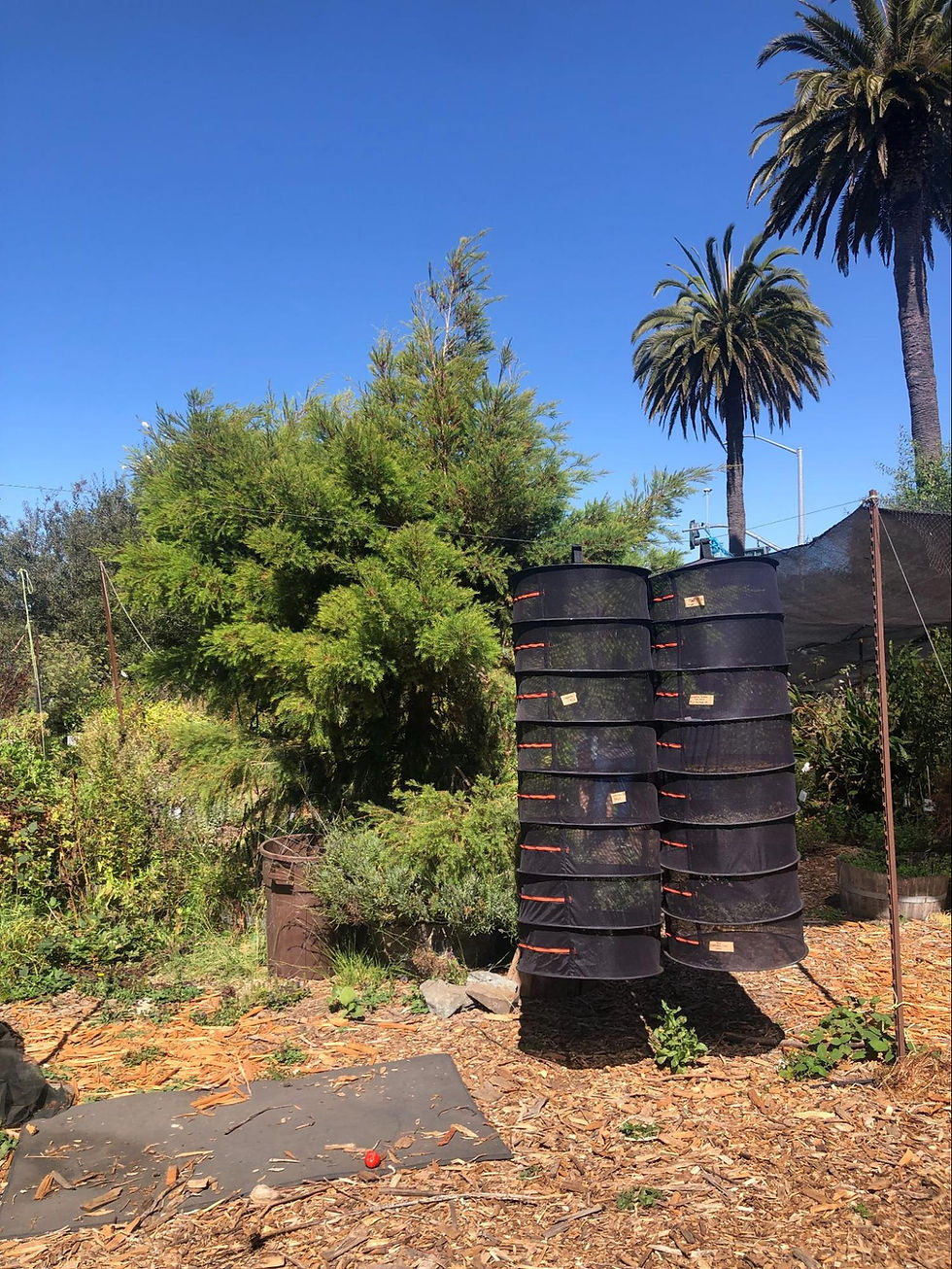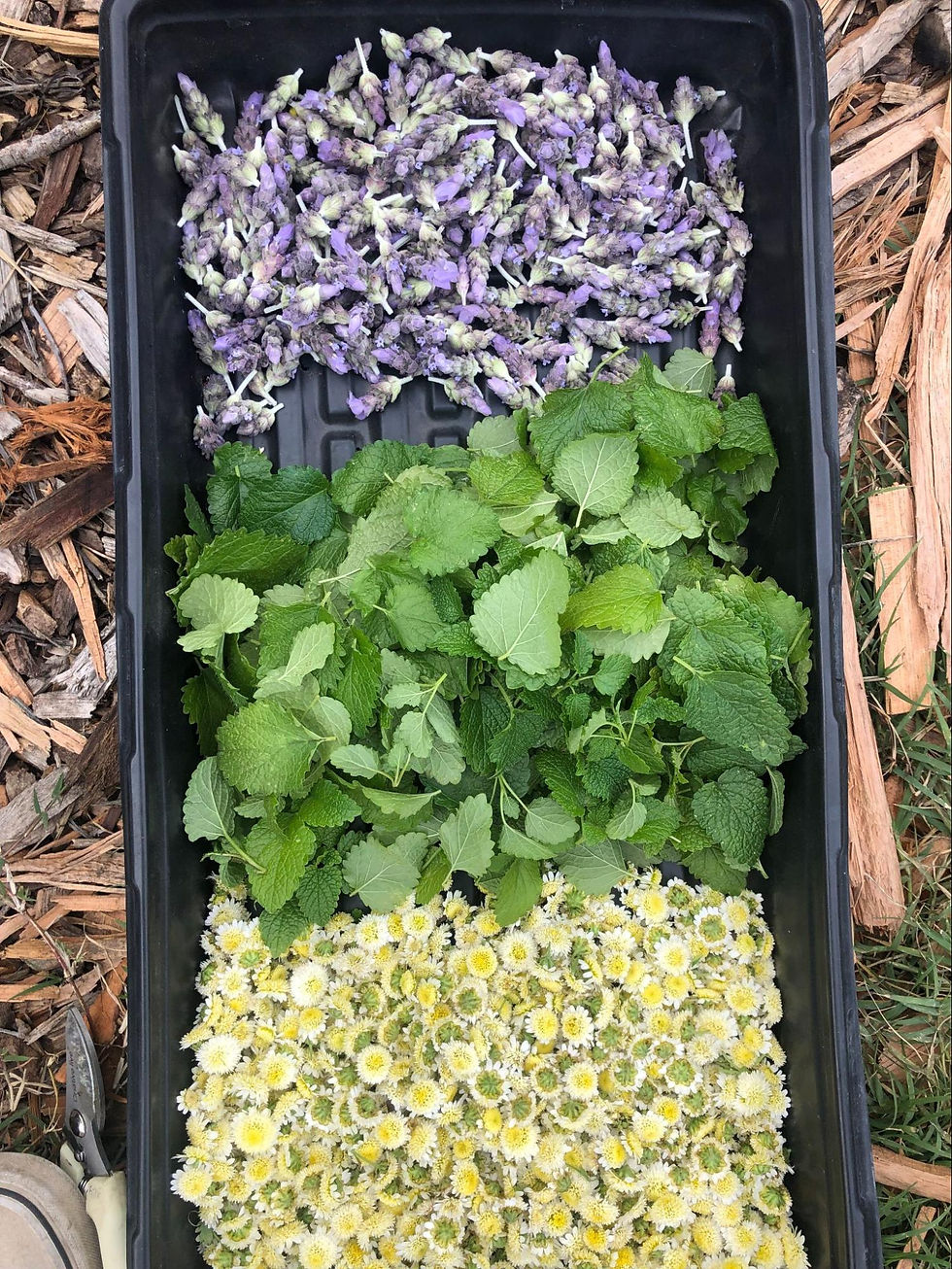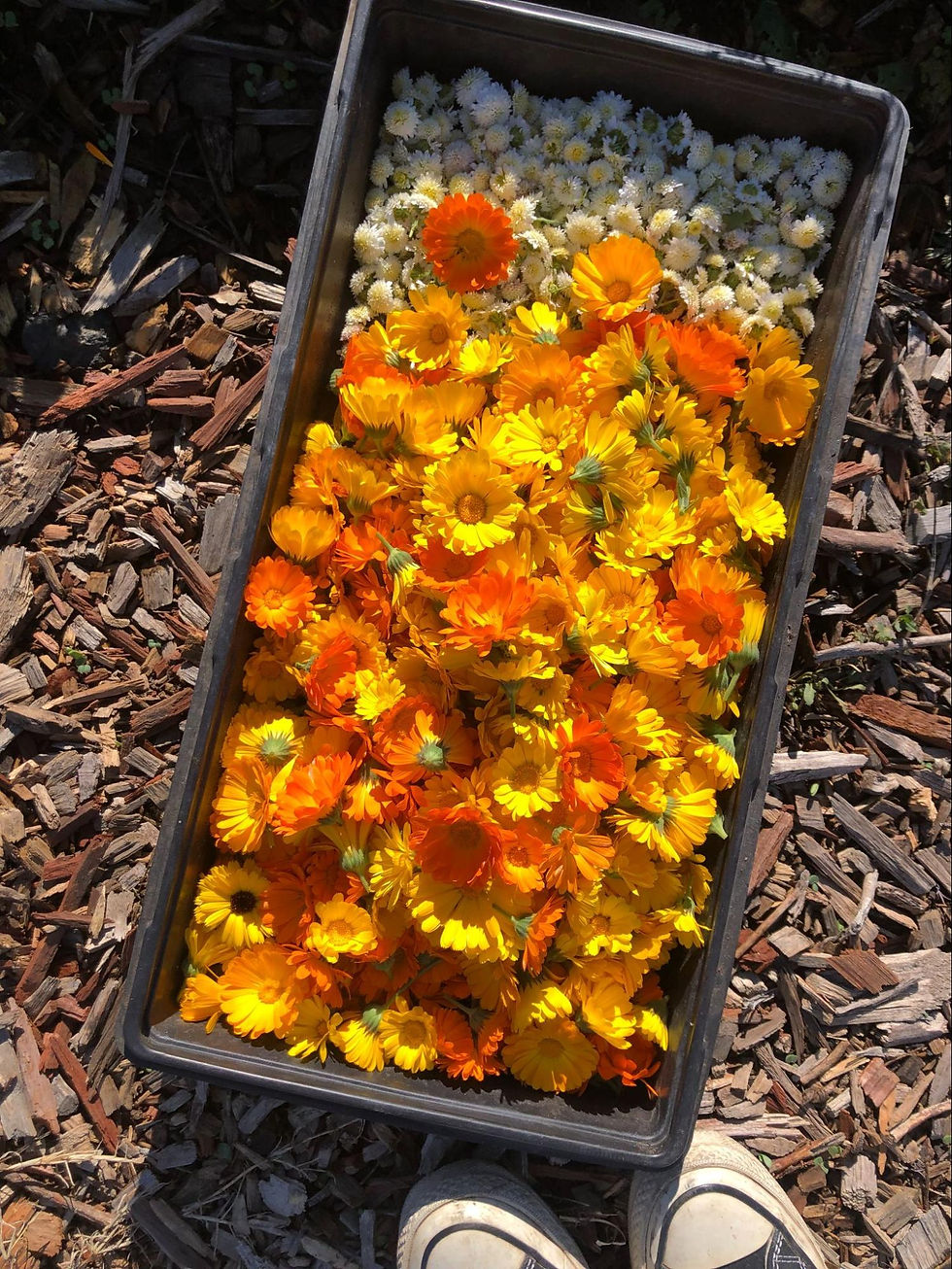Herbalism at the Gill Tract Farm! -- by Anna Kathawala (student intern)
- angelamoon50009
- Feb 27, 2024
- 4 min read
As someone who grew up in an environment far more urban than Berkeley or Albany, I was never able to experience urban agriculture at close proximity. Urban farms exist in New York City, but they aren’t as accessible as the Gill Tract or other urban farms in the East Bay, and the vast majority of them are highly traditional in terms of the crops that they choose to grow. Working at the Gill Tract has exposed me to a wide variety of completely unfamiliar plants, ones that I would never be able to work with on an East Coast urban farm. All of these plants have been amazing to learn about, but I’ve taken special interest in the herbs growing in the medicinal herb garden.
I volunteer at the Gill Tract with the weekly herb gathering group, and each week we harvest and learn about new herbs with an incredible variety of uses. One of the herbs that I found most fascinating to learn about was comfrey, a deep green plant with large teardrop-shaped leaves. It’s used for people with burns, sprains, and bruises to reduce inflammation and was historically used to actually set minor broken bones. I found it fascinating to learn that a plant could have the same medical effect on a person as that of a cast and that a working solution to such an intense medical issue exists in the wild. While comfrey was fascinating to learn about, the plants that most interested me were the most common ones, as they exist all over and are so powerful. We learned about how field mint can be used to calm the nervous system and provide gastrointestinal relief, how grindelia can be used to alleviate coughs and as an anti-inflammatory, how calendula can help to clear the skin and help wounds heal faster, and how lemon balm can reduce stress and anxiety. It was fascinating to learn about how the natural world produces all of these remedies for everyday issues that the human population faces, and how our medical system has become so removed from these traditional roots. Today’s society and medical professionals overwhelmingly view traditional medicine as less legitimate or useful than modern medicine, generally prescribing manufactured pills or other products over traditional medicine. Doctors are often hesitant to use traditional herbal medicine in conjunction with modern medicine, despite the benefits that they’ve been proven to have.
However, the last two decades have seen an increase in naturopathic doctors, practitioners who combine modern medicine with natural remedies to create a more holistic approach to medicine that doesn’t draw from just one way of providing health. Naturopathic doctors look more closely at a person’s entire medical history, their medical strengths and weaknesses, and other major components of a person’s life, rather than just the immediate medical issue on hand, to diagnose issues and then prescribe remedies that derive both from modern medicine and herbal remedies. Learning about medicinal herbs at the Gill Tract has made me see the clear benefit of naturopathic doctors, as the experience has shown me how beneficial medicinal herbs are! It’s opened my eyes to a whole new side of the medical field, which has been fascinating.
Beyond their proven medicinal capacities, I’ve also observed the power of medicinal herbs in healing the mind. When all of us come to the farm to volunteer, harvest, and learn about these herbs, we all make the active decision to be present on the land and engage in the community present at the farm. Taking time away from screens and other parts of daily life to bend over and wrestle with stinging nettle and blackberry bushes, to pull weeds and grass, to snip delicate yellow and orange calendula flowers off their stems, to collect the pearly seeds of job’s tears, and take deep breaths of air and the scent of lavender and lemon balm helps greatly with the stress of everyday life, soothing all of us collectively. We also spend that time in community with one another, talking, sharing stories, and laughing. The herbs have created a safe space - an environment in which we all feel like we belong and our voices matter and are heard - just by virtue of needing to be picked.
Short Summary
Learning about medicinal herbs during my time at the Gill Tract has been an incredible experience! We learned about how field mint can be used to calm the nervous system and provide gastrointestinal relief, how grindelia can be used to alleviate coughs and as an anti-inflammatory, how calendula can help to clear the skin and help wounds heal faster, and how lemon balm can reduce stress and anxiety. It was fascinating to learn about how the natural world produces all of these remedies for everyday issues that the human population faces, and how our medical system has become so removed from these traditional roots.
Images



Written by Anna Kathawala, student intern at Gill Tract Farm
_p.png)






















Comments